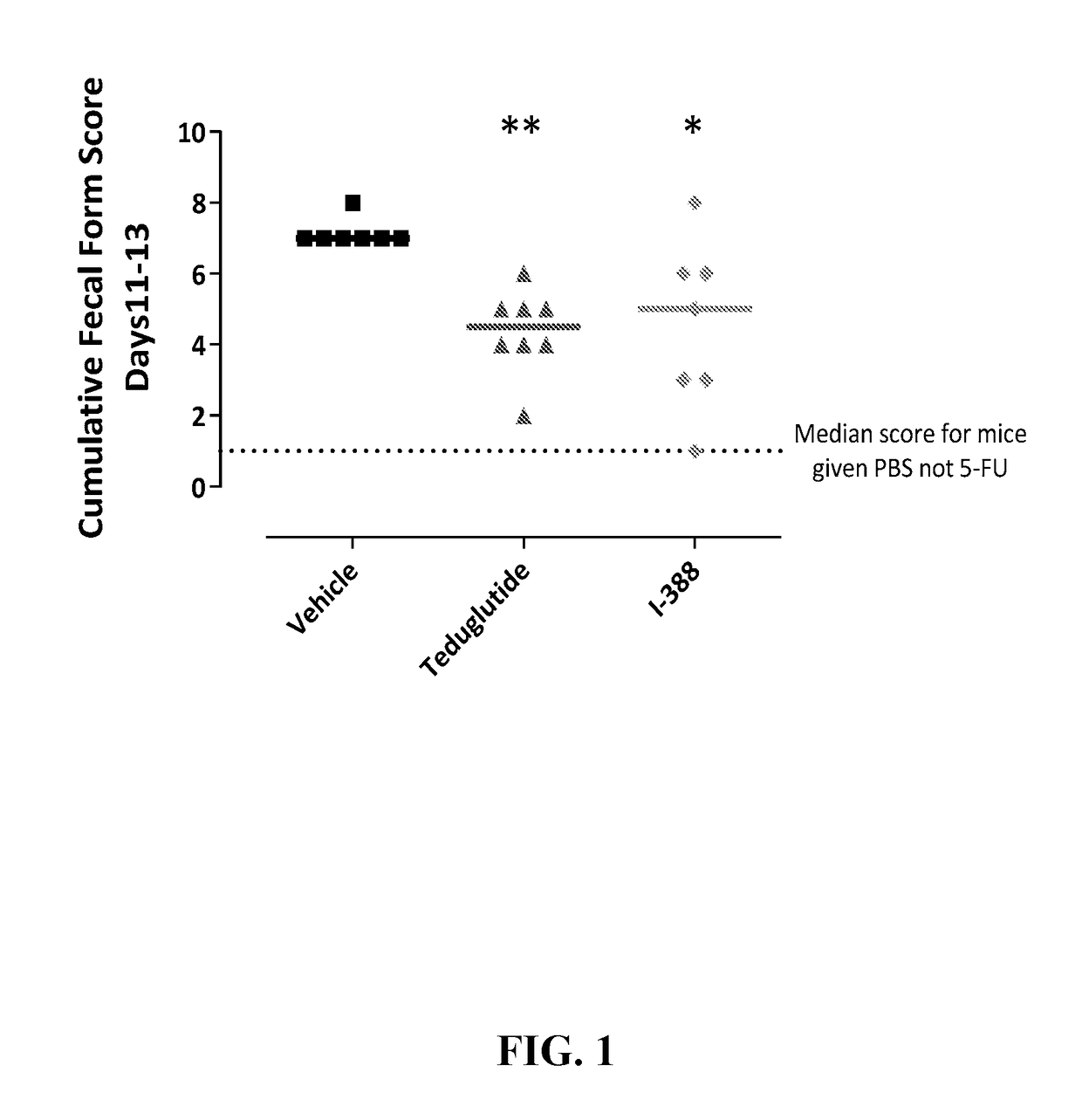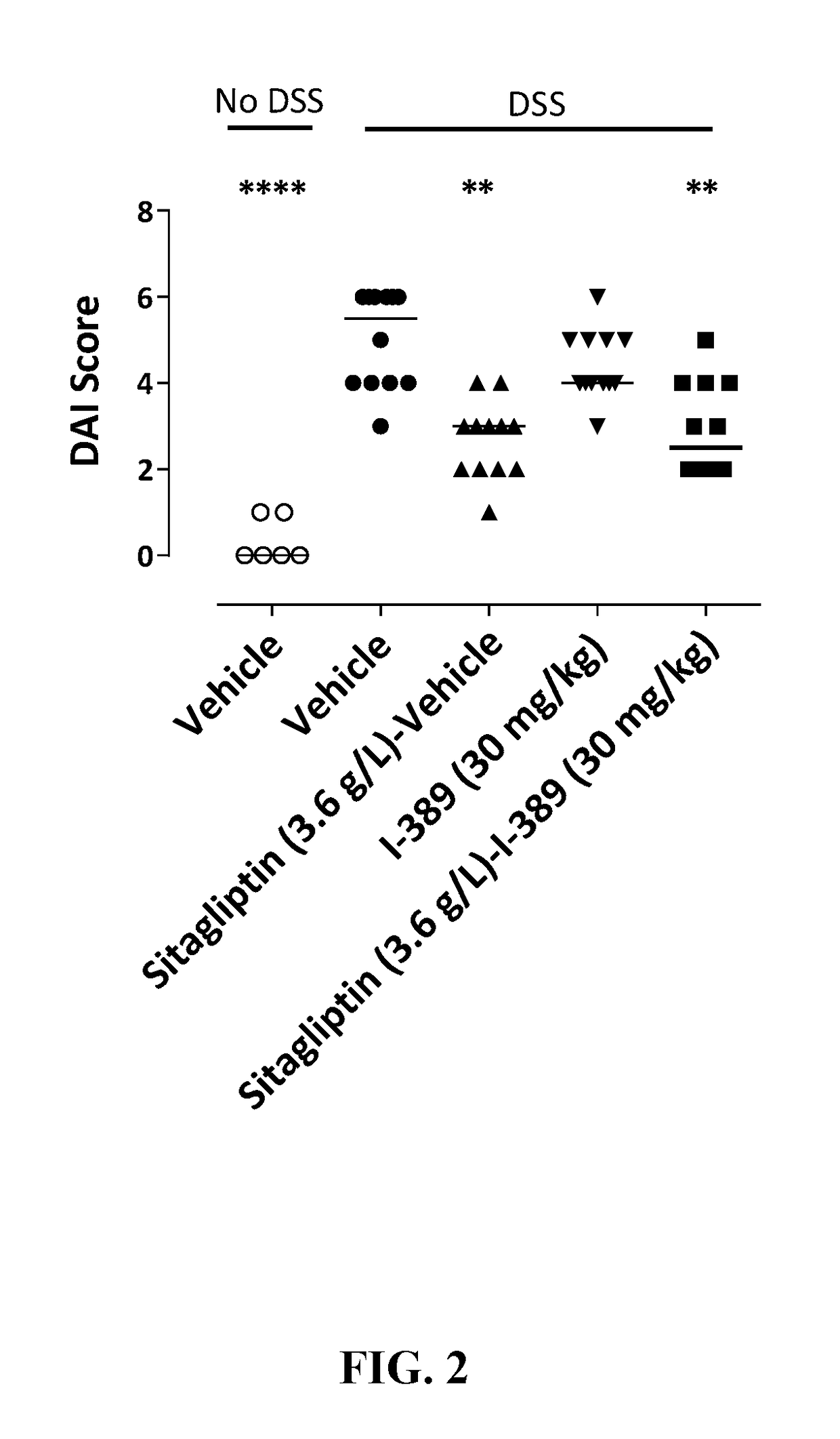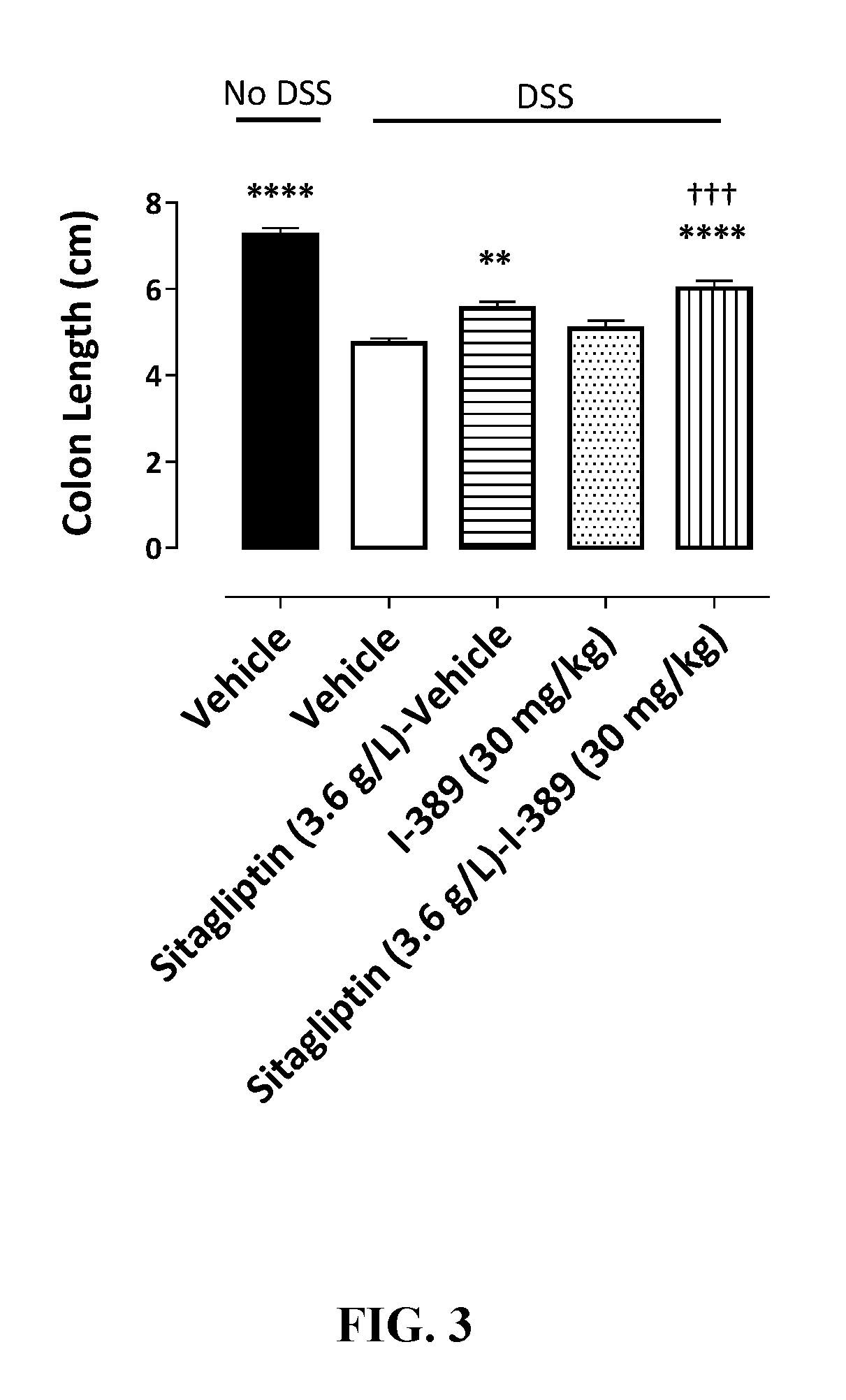Substituted 4-phenyl pyridine compounds as non-systemic tgr5 agonists
a technology of tgr5 and pyridine, which is applied in the field of substituting 4-phenyl pyridine compounds as non-systemic tgr5 agonists, can solve the problems of increased risk of cardiovascular disease, so as to improve the effect of safety and efficacy
- Summary
- Abstract
- Description
- Claims
- Application Information
AI Technical Summary
Benefits of technology
Problems solved by technology
Method used
Image
Examples
example 1
ate A-1. 1-[4-(2-cyclopropoxyphenyl)pyridin-3-yl]cyclopropan-1-amine
[1417]
Step 1. 4-(2-cyclopropoxyphenyl)pyridine-3-carbonitrile (A-1a)
[1418]To a 100-mL round-bottom flask purged and maintained under an inert atmosphere of nitrogen, charged with 4-chloropyridine-3-carbonitrile (997.5 mg, 7.20 mmol, 1.00 equiv), toluene (50 mL), (2-cyclopropoxyphenyl)boronic acid (1.2 g, 6.74 mmol, 0.95 equiv), Pd(OAc)2 (16.14 mg, 0.07 mmol, 0.01 equiv), K3PO4 (3.11 g, 14.65 mmol, 2.00 equiv) and butyldi-1-adamantylphosphine (358.5 mg, 0.144 mmol, 0.02 equiv). The resulting solution was stirred for 2 h at 100° C. in an oil bath. The resulting mixture was concentrated under vacuum. The residue was applied onto a silica gel column with ethyl acetate / petroleum ether (1:5). This resulted in 1.6 g (94%) of 4-(2-cyclopropoxyphenyl)pyridine-3-carbonitrile (A-1a) as light yellow oil.
Step 2. 1-[4-(2-cyclopropoxyphenyl)pyridin-3-yl]cyclopropan-1-amine (A-1)
[1419]To a 250-mL 3-necked round-bottom flask purged ...
example 2
ate A-19 1-[4-[2-(oxetan-3-yloxy)phenyl]pyridin-3-yl]cyclopropan-1-amine
[1421]
Step 1. 1-(4-chloropyridin-3-yl)cyclopropan-1-amine (A-19a)
[1422]To a 500-mL round-bottom flask purged and maintained under an inert atmosphere of nitrogen, charged with 4-chloropyridine-3-carbonitrile (5.75 g, 41.50 mmol, 1.00 equiv) and ether (150 mL). This was followed by the addition of Ti(OiPr)4 (17.7 g, 1.50 equiv) dropwise with stirring at −78° C. in 30 min. To this was added EtMgBr (34.6 mL, 2.50 equiv, 3M in Et2O) dropwise with stirring at −78° C. in 30 min and stirred for 2 h at room temperature. To the mixture was added BF3-Et2O (23.56 g, 4.00 equiv). The resulting solution was stirred for 2 h at room temperature. The reaction was then quenched by the addition of 1M hydrogen chloride. The pH value of the solution was adjusted to 10 with sodium hydroxide (4 mol / L). The resulting solution was extracted with 3×80 mL of ethyl acetate and the organic layers combined and dried over anhydrous sodium su...
example 3
yclopropoxyphenyl)pyridin-3-yl]-N-[(2,5-dichlorophenyl)methyl]cyclopropan-1-amine (I-1
[1428]
[1429]To a 50-mL round-bottom flask purged and maintained under an inert atmosphere of nitrogen, charged with 1-[4-(2-cyclopropoxyphenyl)pyridin-3-yl]cyclopropan-1-amine (200 mg, 0.75 mmol, 1.00 equiv), dichloromethane (20 mL), 2,5-dichlorobenzaldehyde (183 mg, 1.05 mmol, 1.00 equiv) and NaBH(OAc)3 (1.34 g, 6.32 mmol, 6.00 equiv). The resulting solution was stirred overnight at room temperature. The resulting mixture was concentrated under vacuum. The residue was applied onto a silica gel column with ethyl acetate / petroleum ether (1:5). This resulted in 100 mg (31%) of Compound I-1 as a light yellow solid. MS (ES, m / z): 425.05 [M+H]+; 1H NMR (400 MHz, CDCl3): δ ppm 8.63 (s, 1H), 8.54-8.52 (d, 1H), 7.43-7.34 (m, 2H), 7.26-7.20 (m, 2H), 7.14-7.03 (m, 4H), 3.67-3.59 (m, 3H), 2.12 (brs, 1H), 0.84 (s, 4H), 0.73-0.64 (m, 2H), 0.62-0.52 (m, 2H).
[1430]The compounds in Table 1, Compounds I-2 to I-40 a...
PUM
| Property | Measurement | Unit |
|---|---|---|
| time | aaaaa | aaaaa |
| resistance | aaaaa | aaaaa |
Abstract
Description
Claims
Application Information
 Login to View More
Login to View More - R&D
- Intellectual Property
- Life Sciences
- Materials
- Tech Scout
- Unparalleled Data Quality
- Higher Quality Content
- 60% Fewer Hallucinations
Browse by: Latest US Patents, China's latest patents, Technical Efficacy Thesaurus, Application Domain, Technology Topic, Popular Technical Reports.
© 2025 PatSnap. All rights reserved.Legal|Privacy policy|Modern Slavery Act Transparency Statement|Sitemap|About US| Contact US: help@patsnap.com



